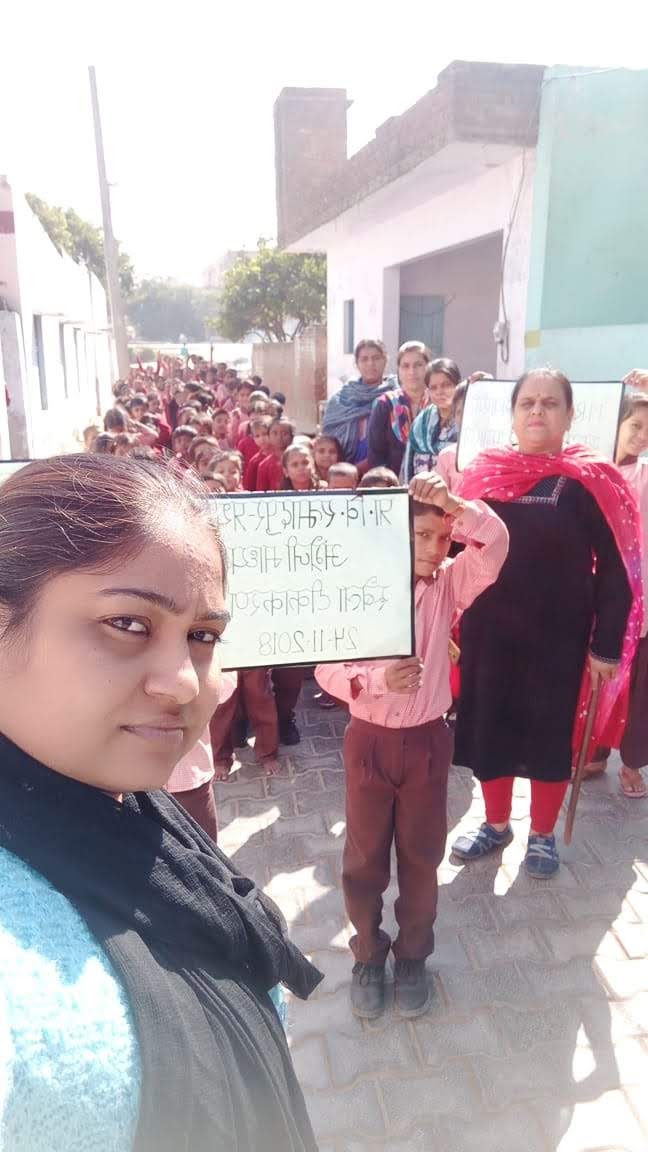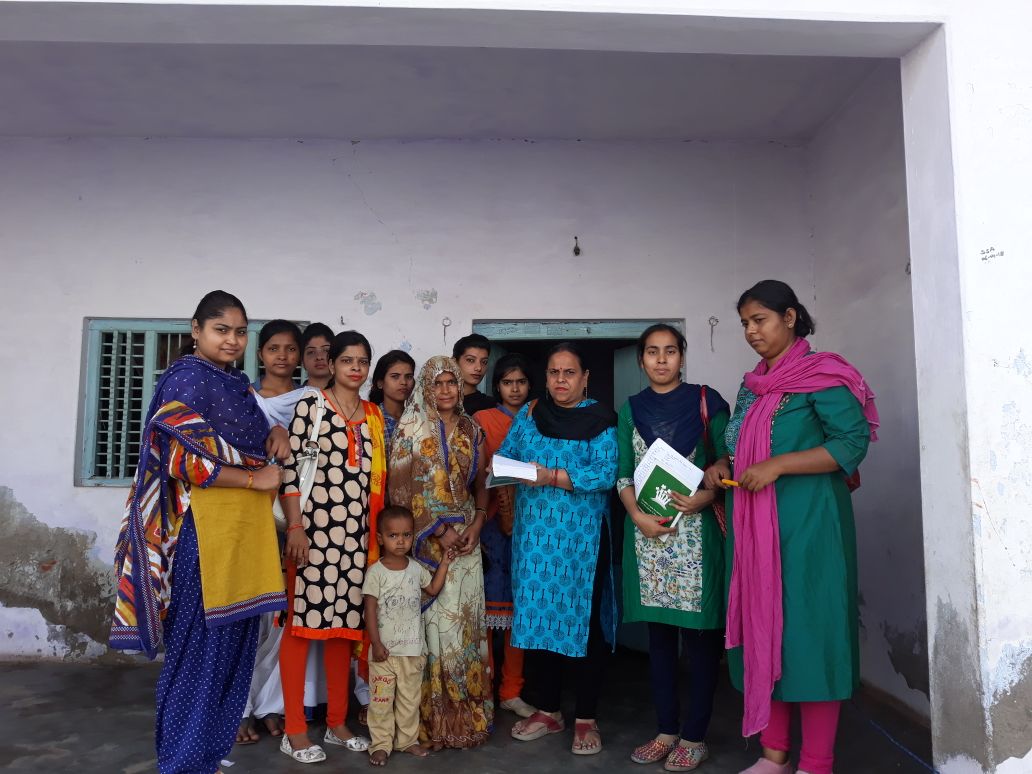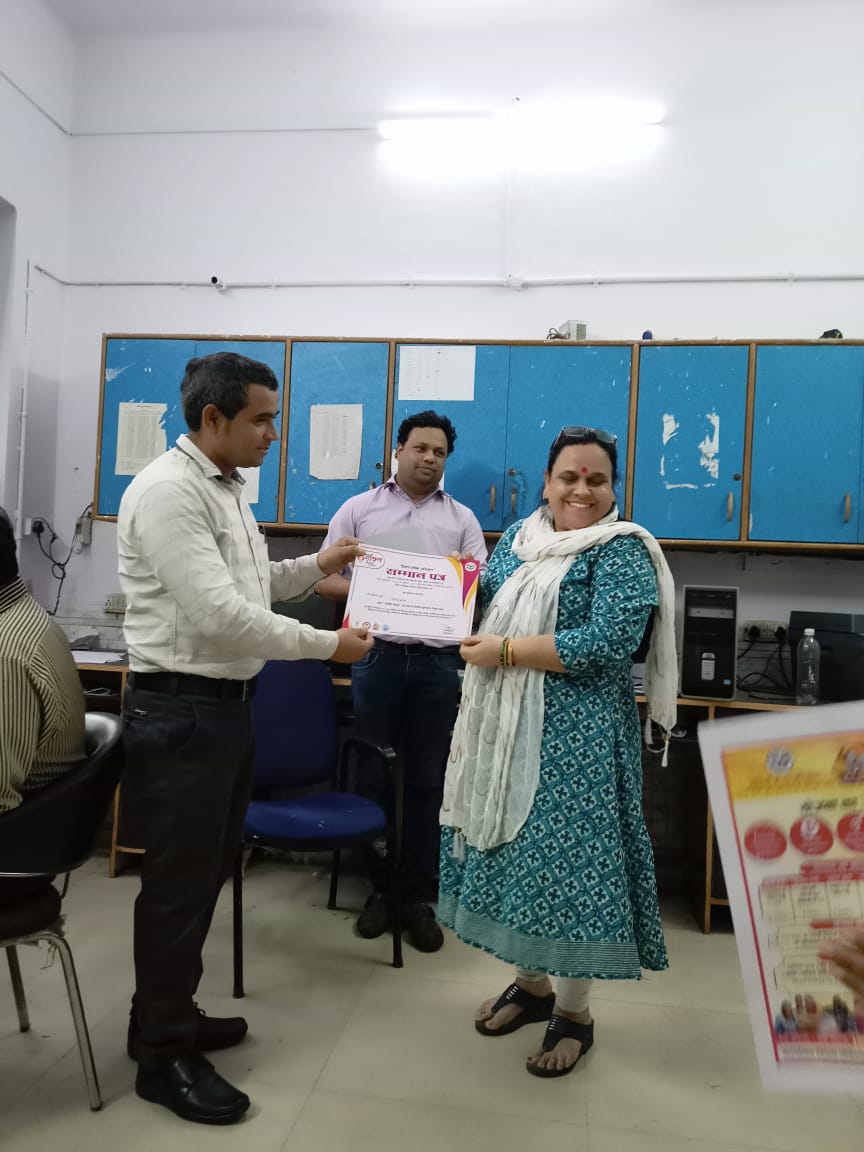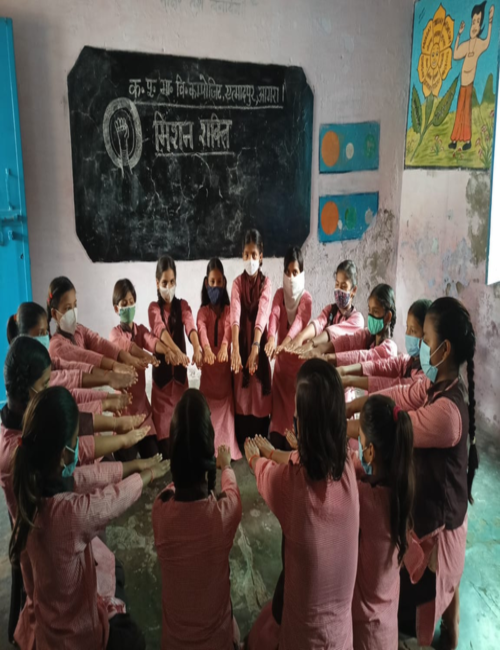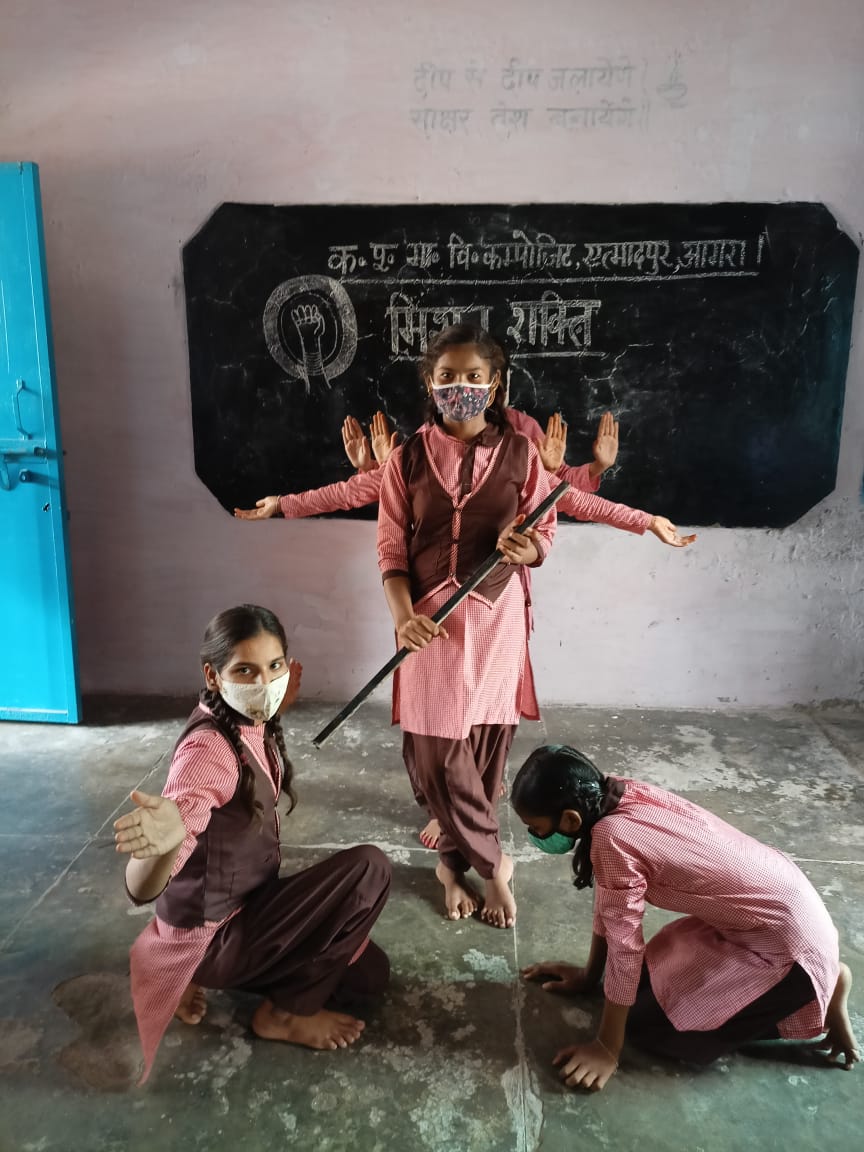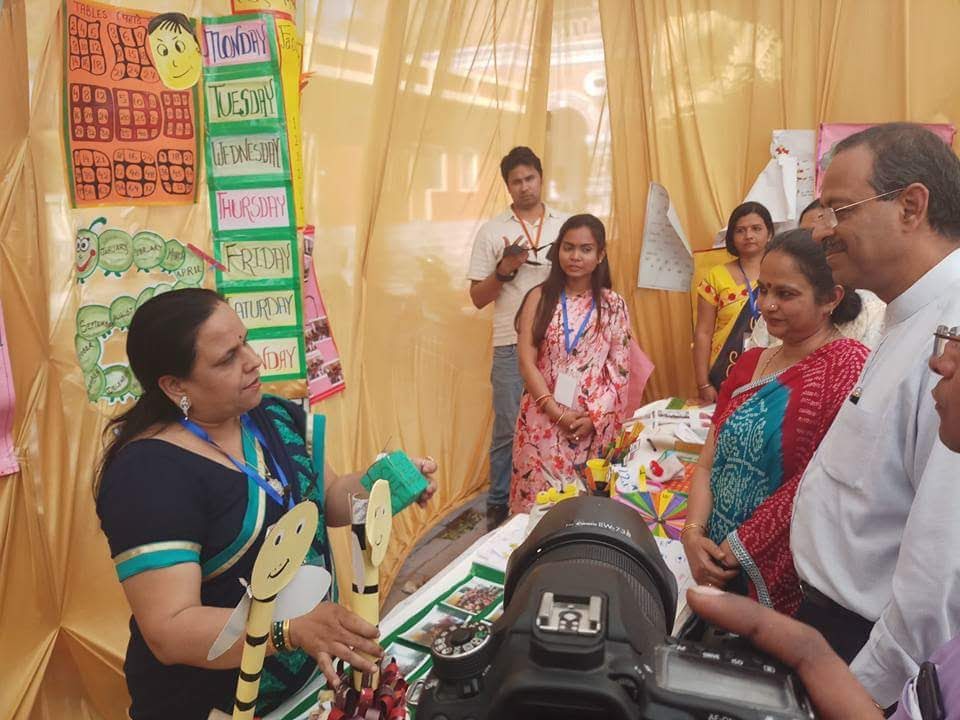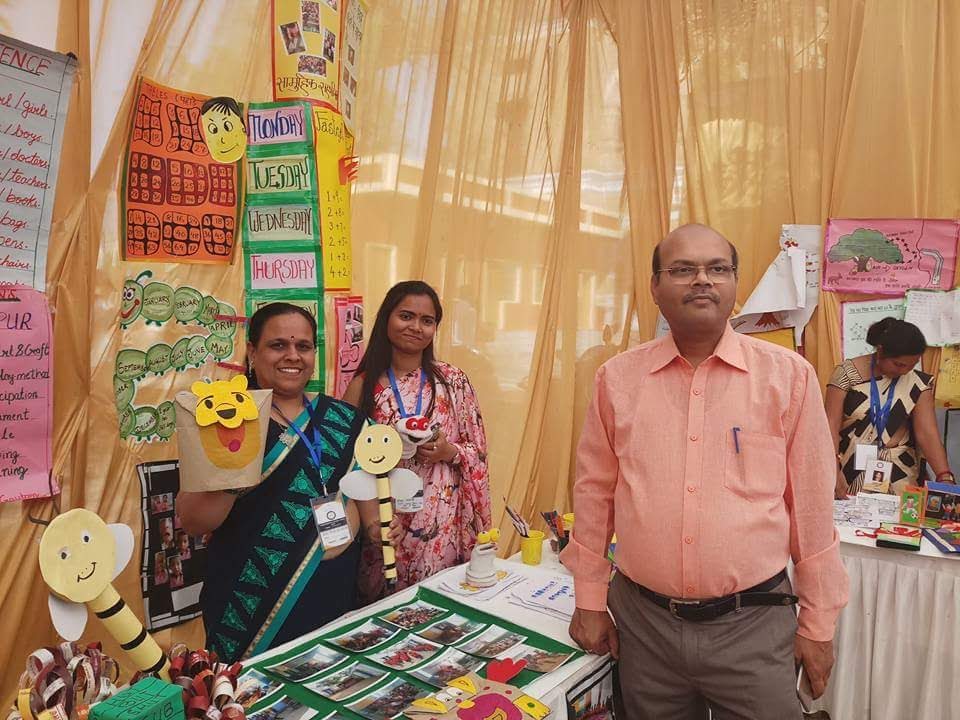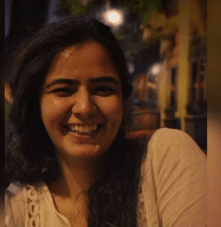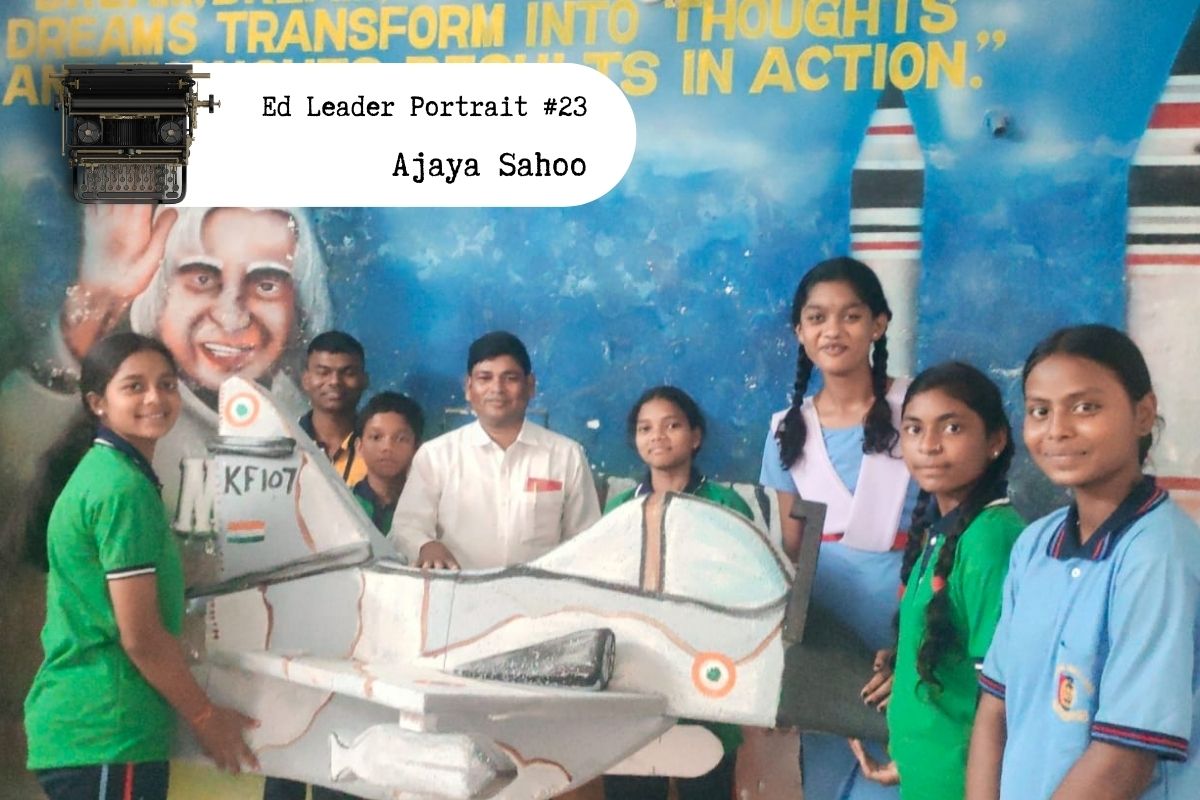Bringing a Community Together to enhance Student Outcomes

Effective student learning is an outcome of many variables not just inside but outside the school as well. School leaders need to manage all these variables. In addition to school infrastructure, setting school culture, teacher upskilling, they have to ensure that parents are invested in their child’s education and the school community views the school as an able institution which will harness their child’s potential. Visit any school and you will find that every day presents a unique challenge, efforts made or not. The school leader has to continuously understand the problems, find out the solutions and drive improvements and thus enhance outcomes for the children.
Mrs. Priyanka Gautam, Headteacher at G.J.H.S Composite, Etmadpur, Agra, Uttar Pradesh, plays a role no different. She started as an Assistant Teacher in 2005, has taught students and led teams in six different schools. Effective community engagement is her improvement mantra to make quality education both accessible and relevant for student families.
The Challenge at Hand
Priyanka Ma’am studied at a Convent school – a disciplined, equipped, empowering school environment. During her first posting in 2005 as Assistant Teacher in a government school, she was startled to notice the extremely deplorable conditions of the school. There were no benches for students to sit. Even basic requirements of drinking water or proper sanitation were also missing – both students and teachers had to travel back to their houses or nearby plots of land during school hours. Moreover, less than 20% of enrolled students attended classes. Teachers had to repeatedly call the families to send their children to school.
She resolved to solve these issues, but the first step was to understand the root cause of the problem – the why behind each of these issues. Was it boredom that led to absenteeism or lack of basic facilities? Were parents not aware of the potential of education and job prospects? Were the teaching methods not engaging enough?
Just like how we use google maps to reach our destination, we have to pace up our technical knowledge and use it to navigate the path to achieve the target
Sensing the Problems and Learning about the Families Deeply
Priyanka Ma’am along with another Assistant Teacher went door-to-door to meet the parents and to assess the grievances of the parents. She tried to understand their challenges up close and eventually build the relationship to convince them to send their children to school.
During her interactions, she found out that most of the parents were poor and illiterate and didn’t understand the relevance of education and thus considered sending their children to school of no value. Instead, they preferred their children to help them in farms and homes. The situation was even worse for girls who were considered a liability or only worthy of taking care of the household chores.
Additionally, the School Management committee (SMC) – responsible for the development and management of the school – was virtually non-existent. The Village Head was the only authority who would sometimes visit the school. There were not many inputs and ideas to make the school an effective learning space.
Now that she had uncovered the issues and understood the communities’ concerns on a deeper level- it was time to find and implement solutions. No doubt it was far more challenging and tiring. She knew that the parents are the key to get the students to school and she continued to meet them.
Micro Steps for Macro Improvements
Once at the Republic Day Prabhat Pheri (a procession), Priyanka Ma’am visited around the village with some 8-10 students and by the end when they reached school, half of the village was with them. It happened because of two reasons – firstly, the initiative was something novel for the community and they were naturally curious to be part of it. Secondly, during her visits she had been able to interact with most of the people and watching the enthusiastic troop of singing students, they felt welcomed to join it. The togetherness and willingness that Ma’am witnessed during that time was an affirmation to her idea to keep investing the community.
Activities to involve parents & community
Eventually, she was able to build close relationships with the parents, understanding their everyday challenges and empathising with them. When the villagers started considering her one of their own, she initiated the conversations around building a secure future for their children, especially girls – through education. Priyanka Ma’am, along with other teachers, shared personal experiences and achievements to encourage the parents to make their children more capable.
Door-to-door campaigning to increase enrolment & attendance
Even though her school was a primary one, catering to Grades 1-5 students, she welcomed the middle school students with equal zeal and affection. She encouraged them to come to school with their younger siblings. She resolved their scepticism with an opportunity to clear any academic doubts or brush up on previous knowledge and subjects. With this, along with the 6th-7th-8th graders, she got the villagers to send their younger children to the school as well.
Once, the state government introduced a scholarship program. Seeing this as an opportunity to further encourage parents’ participation, she started to prepare her students for the scholarship exam. She built a system of teachers in different states and created multiple WhatsApp Groups with around 250 teachers in each. The objective was to supplement students’ preparation through online worksheets and videos over WhatsApp groups and Google Meet calls. Different subject sheets were circulated on different days and at the end of the week, on Saturday, a cumulative questionnaire was answered up by the students through Google forms. This allowed for continuous tracking of the progress of students. She also helped the families to get the set of documents necessary to apply for the scholarship.
To provide girls with a platform to hone their creative skills in school, Priyanka Ma’am invited people from the village itself to teach creative arts to the girls in school. They were given lessons on Stitching, applying Henna , Engraving (Nakkashi) and Embroidery. To further encourage them, on the occasion of Republic Day, an exhibition was organised in school to reward the efforts of the girls and also provide them an opportunity to sell their artworks – handkerchiefs, pots, flowers, bags, socks, etc.. There were different food stalls managed by students themselves. The parents were invited to the exhibition which led to renewed belief in the school system. For her initiatives under the program she was recognized as ‘Shakti Yodha’ by the state.
Glimpses from a girl empowerment program led by Priyanka Ma’am
These small yet impactful efforts by Priyanka Ma’am’s reaped multiple benefits. Over time, the student attendance increased, and almost all students started attending school regularly. The efforts teachers had to put to individually call each student, reduced and the student started attending the school willingly. Parents started attending Open Day (to evaluate and strategise for student progress) held every Saturday. Parents were much more invested in their children’s education than ever before and willing to send the girls to school.
These early wins encouraged Ma’am and others in school to continue introducing improvements across school. Games, Stories were used to make learning engaging, the school infrastructure was redesigned as a learning aid and a Student Council was also formed. During the pandemic, student volunteers (students who have passed out of the schools) were identified who were assigned 10-12 students each who did not have access to smartphones to continue learning at home.
Explaining about innovative teaching practices at Teaching Learning Material(TLM) Mela to Mr. Anil Swarup, Secretary, Ministry of Education (left) & Mr. Alok Srivastava, Block Education Officer (right)
Priyanka Ma’am is also an active member of the society. She has been part of ‘River Connect Program’ & ‘Yamuna Bachao’ campaigns along with her fellow teachers. She has been able to effectively and continuously employ the concept of learning by doing – assessing the situation in her school, identifying the strengths and areas of improvement based on data and available information, reaching out to other experts in her ecosystem and learning effective strategies to lead improvements in identified areas. When asked from where she derives the motivation to do this everyday, she shared that the development of character and effort in children is what she seeks and sees through the efforts undertaken. She also credits her family for constantly being by her side and encouraging her to be the great teacher that she is. Her achievements and contributions were recently rewarded by the government in the Mission Shakti Samwad held in Prayagraj, Uttar Pradesh last year. An empowered leader driving sustainable improvements in her ecosystem!


